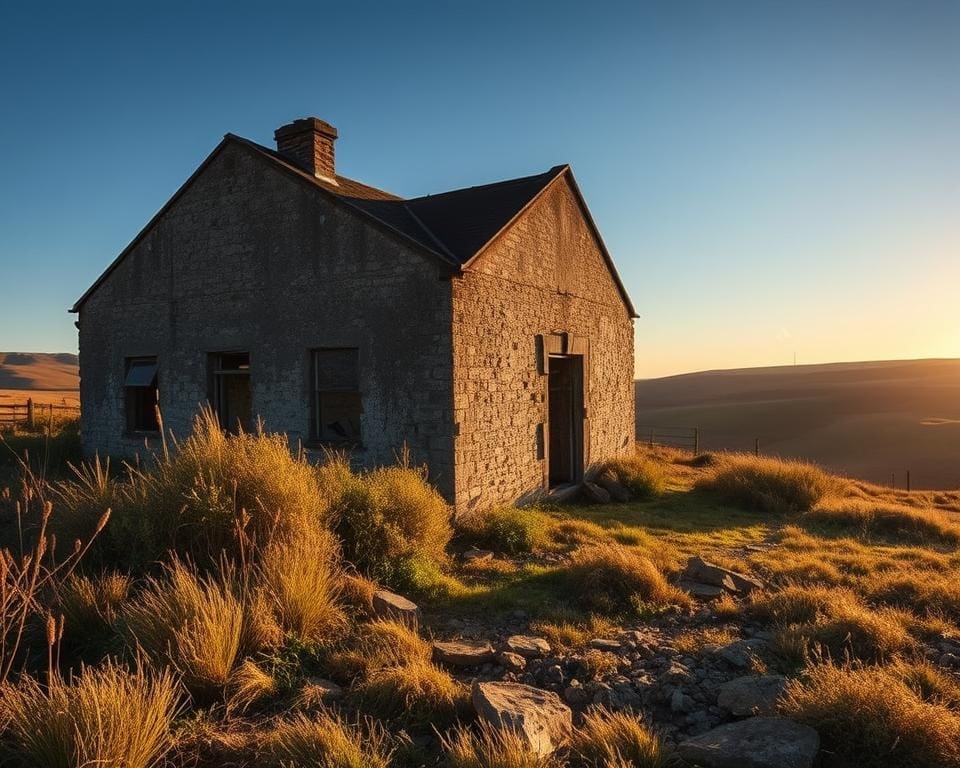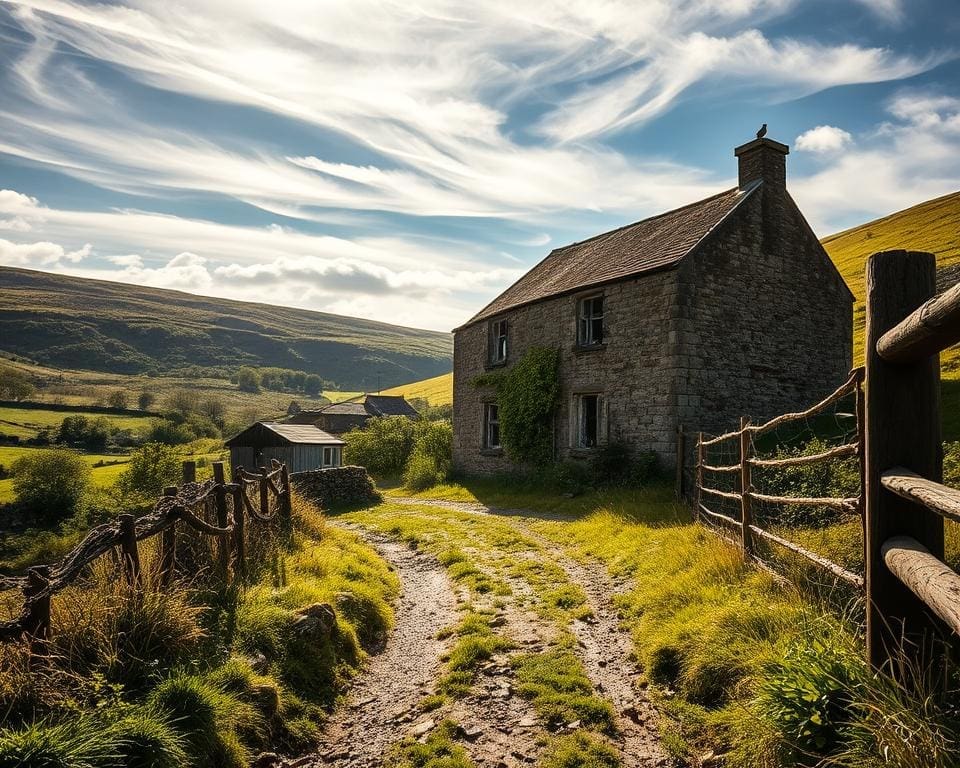Reviving abandoned properties in rural Wales presents a unique opportunity to reclaim and rejuvenate the local landscape. With many homes lying dormant, the question arises: how do you revive abandoned properties in rural Wales? It is essential for property owners, developers, and community members to engage in this revitalisation initiative, as the benefits extend beyond mere aesthetics. By breathing life back into these homes, we enhance property values, create vibrant community spaces, and preserve the rich cultural heritage unique to Wales. In this article, we will explore the challenges and strategies involved in reviving rural Welsh properties and highlight the vital role of collaboration in this transformative process.
Understanding the Challenges of Abandoned Properties in Rural Wales
Reviving abandoned properties in rural Wales requires a comprehensive grasp of multiple challenges. Structural deterioration often plagues these buildings, leading to safety concerns and escalating repair costs. The complexities surrounding ownership and legal obstructions further complicate matters, making it difficult for potential investors to navigate the revival process.
Economic decline in certain areas has contributed to the growing number of abandoned properties. As more residents move away, it creates a demographic shift that reduces the demand for housing. This situation can lead to a vicious cycle, where fewer inhabitants result in limited resources for upkeep and renovation.
Understanding challenges of abandoned properties involves acknowledging the emotional ties of the local community. Many residents view these derelict structures as blemishes on their neighbourhoods, impacting community spirit and morale. The path to rural property revival is arduous yet achievable, as it requires coordinated efforts between local government, community members, and private investors who see the potential in these forgotten homes.

How do you revive abandoned properties in rural Wales?
Reviving abandoned properties in rural Wales involves a meticulous process that begins with understanding the critical factors affecting their condition. Key steps include identifying issues for revival and assessing the properties’ historical significance. These processes lay the groundwork for effective renovation and restoration.
Identifying Key Issues for Revival
One of the foremost tasks in reviving rural Welsh properties is identifying issues for revival that have caused deterioration. This includes evaluating the structural integrity, addressing pest infestations, and ensuring compliance with modern safety standards. Each of these factors plays a pivotal role in determining the feasibility and safety of renovation efforts.
Assessing Historical Significance and Architectural Value
Next, an architectural value appraisal must take place. This step is vital, as understanding the historical significance of a property can reveal potential funding opportunities and garner community support. Properties with rich histories and unique architectural styles often qualify for preservation grants. Retaining these aspects not only contributes to the cultural fabric of rural Welsh villages but can inspire revitalisation efforts that honour local heritage.
Strategies for Revitalising Welsh Countryside Homes
Revitalising abandoned properties in rural Wales requires a multifaceted approach. Community engagement plays a pivotal role, fostering local support and inspiring residents to participate in transformative initiatives. Incorporating community engagement Welsh properties can generate enthusiasm and promote a sense of ownership among locals. By collaborating with residents and local businesses, revitalisation efforts can gain momentum and attract additional support.
Community Engagement and Local Support
Active participation from the community is essential for any successful renovation project. By initiating discussions and encouraging involvement, residents can share valuable insights and foster civic pride. Organising workshops or events can energise the community and highlight the importance of preserving local heritage. Engaging schools, community groups, and businesses can create a network of support, ensuring that revitalisation projects reflect the needs and desires of the community.
Financial Assistance and Grants for Renovation
Securing financial assistance for renovation projects is crucial for restoring abandoned Welsh properties. Various sources provide funding, including government entities and non-profit organisations. Understanding the array of grants available, such as heritage funding or rural development support, can significantly enhance the feasibility of renovation projects. These financial resources empower communities to transform neglected homes, making them a cornerstone of revitalisation strategies for revitalising homes in verdant Wales.
Restoring Charm to Rural Welsh Properties
The beauty of rural Welsh properties often lies in their historical and architectural significance. Initiatives focused on restoring charm to rural Welsh properties not only enhance individual dwellings, but they also enrich the surrounding landscape. Careful attention to the distinctive features of these homes, such as traditional stonework and unique timber beams, results in a rewarding blend of old and new.
Beautifying abandoned homes requires a thoughtful approach. Renovation projects can prioritise the preservation of original elements while incorporating modern conveniences that cater to contemporary living. This duality fosters a livable environment that respects heritage while accommodating today’s lifestyle expectations.
Key factors in rural architecture renewal involve engaging with local communities. Residents often have valuable insights about maintaining cultural heritage and aesthetics that resonate deeply within the area. By collaborating with these communities, restoration projects can align more closely with the unique spirit of rural Wales, ensuring that restored homes become beloved parts of the countryside once again.
Innovative Design Ideas for Reviving Rural Welsh Properties
Revitalising abandoned properties in rural Wales calls for creativity and a forward-thinking approach. Innovative design ideas for properties can breathe new life into neglected homes, making them appealing to modern buyers while respecting their historical significance. Sustainable renovation practices play a crucial role in this transformation, as they not only enhance energy efficiency but also reflect a commitment to environmental stewardship.
Incorporating Sustainable Practices in Renovations
Utilising renewable energy sources, such as solar panels and wind turbines, can dramatically reduce carbon footprints while promising long-term savings on utility bills. Energy-efficient insulation ensures comfort throughout all seasons, minimising energy consumption. Additionally, opting for eco-friendly materials helps to maintain the integrity of the building while contributing to sustainability. These sustainable renovation practices not only benefit the environment but also create a marketing edge in attracting new residents to rural areas.
Creating Functional Spaces that Attract New Residents
Modern living demands versatility, especially in rural settings. Designing open-plan living areas encourages social interaction and fosters a sense of community. Home workspaces are increasingly essential, allowing residents to maintain professional lives without sacrificing the charm of rural living. By creating these functional spaces, such innovative design ideas for properties can significantly enhance the desirability of restored homes, encouraging new residents to embrace life in the countryside.
The Role of Local Authorities in Reviving Rural Welsh Villages
Local authorities in property revival have a significant influence on the transformation of abandoned properties in rural Welsh villages. Their engagement in the revitalisation process can steer projects towards success by providing essential support and guidance. Understanding the nuances of planning permissions Wales is vital for property developers and homebuyers eager to undertake renovation projects.
Planning Permissions and Legalities for Renovation
Navigating the legal landscape of property revival requires a keen knowledge of planning permissions Wales. Local authorities issue these permissions, ensuring that renovations align with community guidelines and preservation standards. Being well-informed about the legalities can streamline the renovation process, allowing for timely project completion without unexpected setbacks.
Creating Incentives for Homebuyers and Investors
Incentives for homebuyers play a crucial role in attracting investment into rural areas. Local councils can implement strategies such as tax breaks, subsidised rates, and financial grants aimed at making property investments more appealing. By fostering a supportive environment for both homebuyers and investors, local authorities can significantly enhance the vibrancy of Welsh villages.
Breathe New Life into Abandoned Welsh Buildings Through Community Projects
Reviving abandoned properties in rural Wales is more than a restoration task; it is a communal effort that brings neighbours together. Community projects for revival ignite inspiration and build a strong foundation for collective action. Residents become invested in transforming neglected spaces, creating a renewed sense of pride and ownership.
Collaborative Renovation Efforts and Workshops
Engaging local volunteers through collaborative renovation efforts can breathe new life into these forgotten structures. Workshops not only offer hands-on experience in restoration skills but also foster relationships among community members. Participants can share knowledge, learn from each other, and contribute meaningfully to the renovation process, thereby enhancing community spirit.
Building Community Spaces for Safe and Welcoming Environments
Creating community spaces is essential for nurturing a welcoming atmosphere. Parks, cafés, and arts centres can serve as focal points for local interaction. These vibrant spaces allow residents to gather, promoting togetherness and inclusivity. As these community projects evolve, they play a crucial role in sustainable community revitalisation by transforming abandoned buildings into vital neighbourhood hubs.
Case Studies of Successful Revitalisation in Wales
Examining successful revitalisation case studies in Wales reveals the transformative power of community involvement and strategic planning. One prominent example is the restoration of a derelict farmhouse in Pembrokeshire, which received funding through the Welsh Government’s Renovation Grant Scheme. Local volunteers collaborated with architects to preserve the property’s historical charm while incorporating modern amenities, ultimately breathing new life into the building and the surrounding area.
Additionally, the regeneration of an abandoned chapel into a community centre in Gwynedd demonstrates the effectiveness of united efforts in reviving properties in Wales. This inspiring renovation not only salvaged a significant architectural heritage but also fostered a hub for social activities, demonstrating that revitalisation can serve both as a means of preserving history and as a catalyst for community engagement.
These inspiring renovation examples serve as tangible models for future initiatives, illustrating that with determination, collaboration, and the right resources, abandoned properties can thrive once again. By analysing successful revitalisation case studies, we can glean valuable insights into the methodologies that underpin effective transformations and inspire similar projects across rural Wales.









